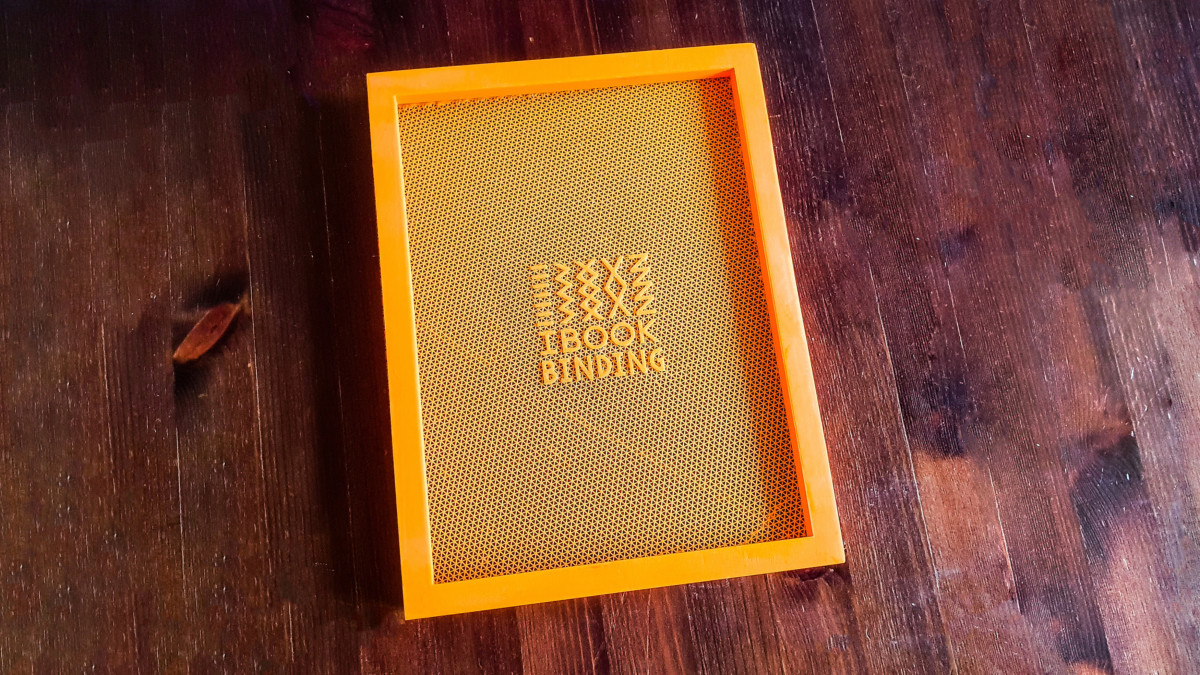Why Didn’t I Make My Papermaking Mould This Way Right From the Beginning?
For several months already I have a 3d-printed papermaking mould at iBookBinding’s Etsy shop. And almost from the beginning, I received the same question multiple times: why wouldn’t I use a more classic design?
Here is the thing, in my first attempt I created a design of a papermaking mould that was as simple, as possible. However, it already allowed to make paper with watermarks. And that was exactly my goal – to make a cheap, yet powerful tool.
In this video I talk about some details of the printing process and show how this papermaking mould works:
Whew! Half a year ago!
And here are some photos of the frame and the resulting paper, if you don’t want to watch the video:
The main problem with prototyping 3d-printed objects, is that the time of printing increases with the size of the model. And my original mould was much thinner than the classic frame. This allowed to save time and material while I was experimenting and finding the right way to make the tool.
When I already had a working design, I decided to add it to iBookBinding’s Etsy shop. And there is a demand for this type of mould! However, some other tasks didn’t allow me to return to that project for several months.
I finalized the new design of a more classic-looking papermaking mould in the middle of this autumn. And already showed it at the Book Arts Fair in Leiden, where it has received some attention.
As with the previous version, this mould may be printed with watermarks:
By the way, now I can tell you what’s the difference in material and printing time. To print the new frame it takes twice as much time and even more than twice as much material compared to the simplified frame.
As of today, you may order both types of frames from us. Either a cheaper version that I designed earlier this year or a more standard frame, the newer one.
Along with this change, there are several other changes to the papermaking moulds we sell. Late this summer I was asked to add a version of a mould that allowed to get that characteristic pattern of laid paper. But that’s old news already. However, I didn’t stop there and introduced another item: a mould with the pattern of wove paper.
You have a choice of a different number of openings per cm with these frames. From 8 (20-mesh) to 32 (80-mesh). However, due to the printing process, all options with 12 openings per cm (3-mesh), and above are much more expensive than the other ones. To produce them, I have to change the nozzle of the 3d-printer from 0.4 mm (that’s the opening through which the molten plastic comes), to either 0.2 mm or 0.15 mm. Which drastically increases the time of printing.
In any case, I’m glad to offer so many different options. And all of them allow you to add your personalized watermarks to the design!
You may find both simplified and classic frames in our shop on Etsy!
Please Support us on Patreon!

Moreover, starting with the pledge level of $3, you will get a digitized vintage book about bookbinding, book history, or book arts each month from us!
These pledges help iBookBinding to continue its work and bring more information about bookbinding and book arts to you!












